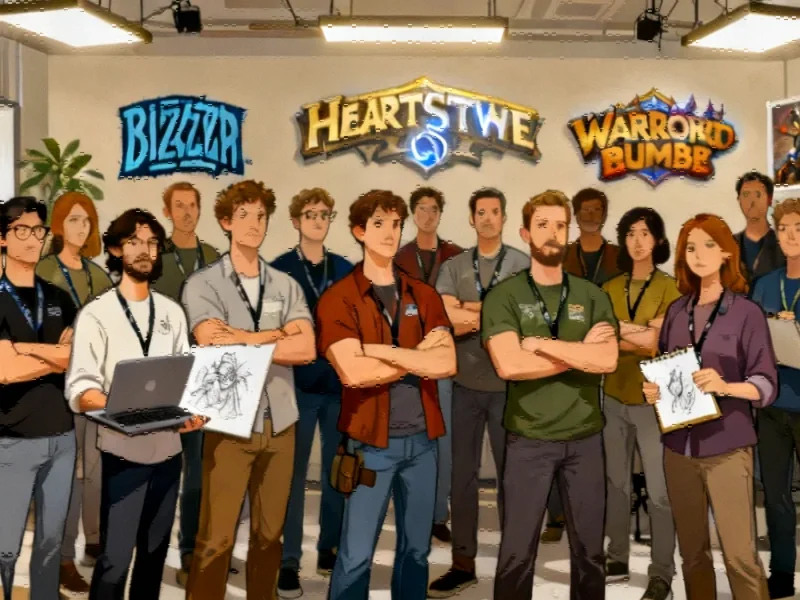A Growing Movement in Game Development
In a significant development for the gaming industry, more than 100 Blizzard employees working on Hearthstone and Warcraft Rumble have officially unionized under the Communication Workers of America (CWA). This latest labor organization represents diverse roles including software engineers, designers, artists, quality assurance testers, and producers, marking another milestone in the ongoing unionization wave sweeping through Microsoft’s gaming studios.
The Ripple Effect of Successful Organizing
The inspiration for this new union came directly from the successful efforts of Blizzard’s World of Warcraft developers, who formed the Warcraft Gamemakers Guild last year. This pioneering move created a domino effect, with unions subsequently forming among Diablo and Overwatch developers earlier in 2025. According to CWA representatives, these collective efforts now represent over 1,900 Blizzard workers, demonstrating the powerful momentum behind the labor movement within the company.
The timing of this expansion is particularly noteworthy given broader industry developments affecting technology workers across multiple sectors. As gaming professionals navigate uncertain times, the support systems being built through unionization are becoming increasingly valuable.
Microsoft’s Neutrality Agreements: A Changing Landscape
Microsoft’s neutrality agreements with CWA have been instrumental in facilitating this union growth. The company initially signed these agreements covering Activision Blizzard workers in 2022 and ZeniMax employees in 2024, partly to reassure regulators about its massive $68.7 billion acquisition of Activision Blizzard. These agreements created an environment where workers could organize without management interference, leading to the current flourishing of union membership across Microsoft’s studios.
However, this supportive environment faces potential disruption. Reports indicate that the neutrality agreement covering Activision Blizzard workers expires in October 2025, which could significantly alter the landscape for future organizing efforts. This comes at a time when market trends are creating additional pressure on large technology companies to optimize their operations.
Unionization Amidst Corporate Restructuring
The new Hearthstone and Warcraft Rumble union emerges during a period of significant turbulence within Microsoft’s gaming division. The company implemented major cuts across its gaming operations this summer, including layoffs that reportedly led to Blizzard winding down development on Warcraft Rumble. These workforce reductions highlight the precarious nature of game development careers, even at established studios.
The intersection of union growth and corporate restructuring reflects broader patterns in the technology sector, where professionals are increasingly seeking stability through collective bargaining. As seen in recent technology sector transitions, workers are developing new strategies to navigate employment uncertainty.
The Future of Labor in Gaming
This latest unionization effort represents a crucial test case for worker organization in the gaming industry. With Microsoft’s acquisition of Activision Blizzard complete, the company has less regulatory incentive to maintain labor-friendly policies. The expiration of the neutrality agreement later this year could determine whether the current wave of unionization continues or faces new obstacles.
For comprehensive coverage of this developing story, including detailed analysis of how this unionization compares to previous efforts at Blizzard, readers can explore this priority report on the specific challenges and opportunities facing Hearthstone and Warcraft Rumble developers.
The gaming industry continues to evolve rapidly, with worker organization becoming an increasingly significant factor in studio operations. As developers seek greater job security and better working conditions, the success of these unionization efforts could set important precedents for the entire entertainment software sector.
This article aggregates information from publicly available sources. All trademarks and copyrights belong to their respective owners.
Note: Featured image is for illustrative purposes only and does not represent any specific product, service, or entity mentioned in this article.



